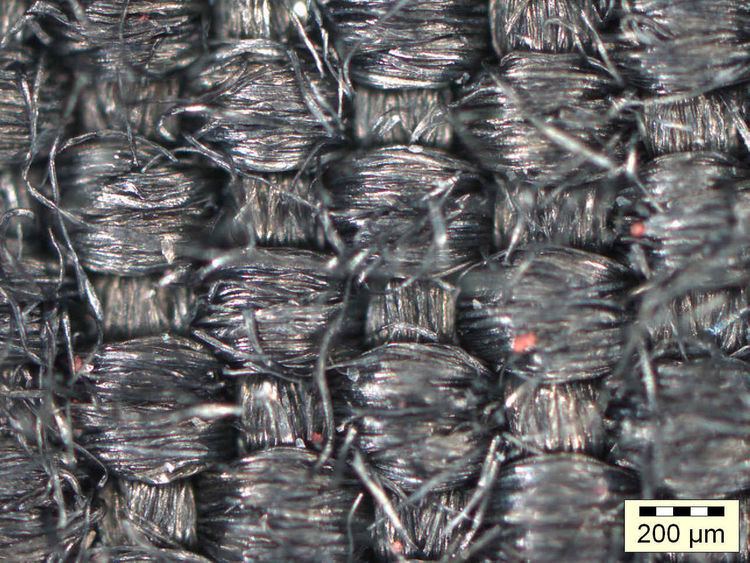 | ||
Ventile, is a registered trademark used to brand a special high-quality woven cotton fabric first developed by scientists at the Shirley Institute in Manchester, England. Originally created to replace a shortage of flax - used for fire hoses and water buckets - its properties were also found to be ideal for pilots' immersion suits.
Contents
Using extra-long-staple (ELS) cotton fibres to form low-twist yarns these are then woven into a tight high-density textile to create a 100% cotton fabric capable of providing an effective barrier against inclement weather. In wet weather the softly spun yarns - within the tight weave - dynamically expand to form an effective barrier against the elements.
Currently the only manufacturer of this specification of cotton textile is Stotz & Co AG, where they spin, twist, weave and dye the raw materials in their native Switzerland, and sell the textile directly under their own branding of etaProof cotton; supplying clothing manufacturers and wholesale textile distributors globally.
British production of Ventile eventually ended in the late 20th century but the trademark continues to be used by the British company Talbot Weaving (Chorley) Ltd to market their wholesale distribution of etaProof cotton fabrics. Alternative registered trademarks, owned by other commercial organisations used to market, promote or distribute the fabric, include Supermarine and Duuton3.
Technical detail
It is densely woven from 100% cotton using a long staple fibre. Although weatherproof, it is not coated or laminated; the combination of a dense weave and the swelling of the fibres when wet provide excellent weatherproofing. The natural product offers a high level of comfort due to its drape and breathability while being durable and quiet in use. It also has good resistance to tearing and burning. It is not as light in weight as synthetic fabrics, particularly when wet. While only fabrics scoring Hydrostatic head measurements of 1000mm, or more, are technically considered to be fully waterproof, etaProof fabrics (250g to 270g standard versions) achieve measurements no less than 750mm. This is usually considered to be sufficient for protection against typical rain, while the standard 300g version scores 900mm, whereby the British MOD consider a measurement of 800mm as waterproof.
L24/5620 and L19/5610 are made also in Organic way, denominated 5620.1 RUC and 5610.1 RUC respectively, replacing the fluorocarbon of DWR with paraffin wax. With this change, three properties worsened: Water absorption changed from 10% to 15%, Resistance to water hydrostatic head changed from 750mm to 600mm and Oil repellency changed from 5-6 to 0.
Uses
Fabrics made from the material are used in outerwear performance garments and have military, medical and workwear applications.
Ventile is still used in military uniforms, especially for pilots flying over water. It is not often used in the United States, but in Europe, especially in the UK, it has had a revival with the bushcraft movement. It is popular with birdwatchers and naturalists because, unlike synthetic fabrics such as Gore-Tex, it is quiet in use. It is used by survivalists and bushcrafters in the European forests because of its good resistance to tearing and burning. It is also widely used in polar expeditions. Lighter-weight artificial fibers are the preference among mountaineers.
Among companies producing Ventile clothing are the Scottish clothing company HillTrek, Snowsled of Gloucestershire and Snugpak of West Yorkshire in England, and Wiggy's of Grand Junction, Colorado, USA. The Private White V.C. luxury British clothing brand based in Manchester, UK creates garments with a distinct military influence and uses Ventile cloth for many of their waterproof jackets. The brand have also pioneered 'seam sealing' in Ventile clothing - the internal taping of a jacket's seams to further protect the wearer from wind and rain.
